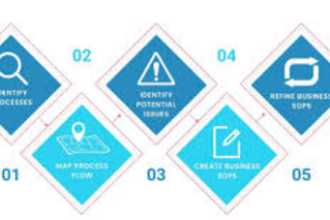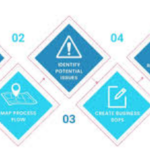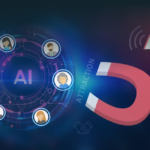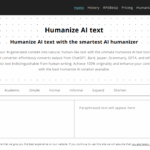I’ll go over how Edge AI is revolutionizing smart agriculture without internet access in this post. Edge AI processes data from sensors, drones, and machinery locally to enable real-time decision-making directly on farms.
Even in remote locations with spotty or restricted internet access, this technology enables farmers to effectively manage pests, monitor crop health, optimize irrigation, and increase productivity.
What is Edge AI?
Instead of depending on cloud servers, edge AI refers to the use of artificial intelligence algorithms directly on local devices or “edge” hardware, such as sensors, cameras, drones, or robots.

This eliminates the requirement for continuous internet access and enables real-time data processing and decision-making. Edge AI can rapidly monitor crop development, identify pests, assess soil health, and manage irrigation on-site in agriculture.
It decreases reliance on external networks, improves privacy, and lowers latency by processing data locally. In isolated or rural locations, edge AI is particularly useful since it makes farming operations intelligent, effective, and self-sufficient even in the absence of internet connectivity.
How Edge AI is Transforming Smart Agriculture Without Internet Connectivity

Example: Edge AI in Precision Irrigation
Step 1: Deploy Edge AI-enabled Sensors
- Distribute sensors measuring soil moisture, temperature, and nutrients across the farm.
- Each sensor has a local Edge AI device to process data in real time.
Step 2: Process Data at the Edge
- An Edge AI device collects data from the sensors.
- On site, AI algorithms evaluate moisture, soil conditions, and weather.
Step 3: Localized Intelligent Decision Making
- The system determines where and in what quantity moisture is needed based on the evaluation.
- All processing is done on site, resulting in no internet needs.
Step 4: Automated Control of Irrigation
- The AI system automatically commands irrigation valves or sprinklers.
- Water is only delivered to needed places, optimizing resource usage.
Step 5: AI Feedback Loop
- Edge AI tracks soil moisture levels and crop changes via a closed feedback loop.
- Updates are immediate to ensure optimal soil moisture for crops.
Step 6: Resulting Benefits
- Water wastage and electricity expenses were dramatically reduced.
- The plants were in better health, and the crop yield increased.
- There is no need for farmers to have an internet presence to operate effectively from rural locations.
Benefits of Edge AI for Farmers
Real-Time Decision Making
Able to react in an instant to changes in data through local processing for irrigation, crop monitoring, and pest control.
Works Without Internet
IoT systems operate without Internet, making it possible to work in remote areas of the field.
Cost Efficiency
Using resources such as water, fertilizer, and energy is managed more efficiently, leading to a reduction in costs.
Enhanced Crop Yield
Growth conditions of plant varieties are of superior quality which results in healthier, more productive plants.
Data Privacy & Security
Protection of sensitive data is a reduction of remote cloud access.
Autonomous Farming
industry (tractors, harvesters, seeders) is able to perform solitary tasks without human presence.
Reduced Latency
Changes in the environment instantly create processing tasks.
Role of Edge AI in Smart Agriculture
Immediate Data Processing: Makes more rapid choices by using the sorted sensor and drone data from the farm for on-the-spot decision-making.
Independence: Farms can run on their own without needing to rely on the Internet.
Smart Farming: Adaptive farm analysis determines the exact volume for irrigation, fertilization, and pest control.
Remote Control of Machinery: Drones, robots, and automated machinery can all be kept to their own.
Continual Monitoring of Crop Condition: Detections of illnesses, lack of nutrients, and growth patterns.
Maximized Efficiency: Greater Yields, lower operating costs, and more efficient operations.
Resource Efficiency: More specific advice on the exact amount of water, fertilizers, and energy to use.
Challenges in Traditional Smart Agriculture
Dependence on Internet Connectivity
This is a major blocker; IoT devices and cloud-based systems require constant, reliable internet, but in site remote farms it’s not possible.
Delayed Decision-Making
When data has to travel to and from the cloud, systems experience latency, which slows response to urgent and critical issues such as pest attacks and irrigation needs.
High Data Transmission Costs
There is a continuous data transfer to cloud servers, thereby increasing costs of operational expenditures.
Data Privacy & Security Risks
There is sensitive information about farms insecurely kept in the cloud.
Limited Real-Time Data Insights
Farmers are not always provided in a timely manner and are bypassed of urgent insights.
Equipment Integration Challenges
This is one of the numerous and leading pains of the systems; the systems are very modular in nature as a combination of different sensors and devices on varying integration designed to different platforms.
Challenges & Limitations of Edge AI in Agriculture
High Initial Investment
Purchasing and installing Edge AI devices and drones can be expensive.
Hardware Limitations
Compared to cloud servers, edge devices have less processing power and storage.
Maintenance Requirements
AI hardware, sensors, and devices need scheduled maintenance and periodic replacements.
Integration Complexity
It can be difficult to add Edge AI to current systems on the farm, or to older model equipment.
Scalability Issues
Deploying Edge AI solutions on large scale farms may require a lot of additional resources.
Skill Gap
Farmers may need to learn how to operate, troubleshoot, or optimize Edge AI systems.
Environmental Vulnerability
Devices are likely to have operational problems when exposed to the weather, dust, bugs, or a combination of the three.
Future of Edge AI in Smart Agriculture
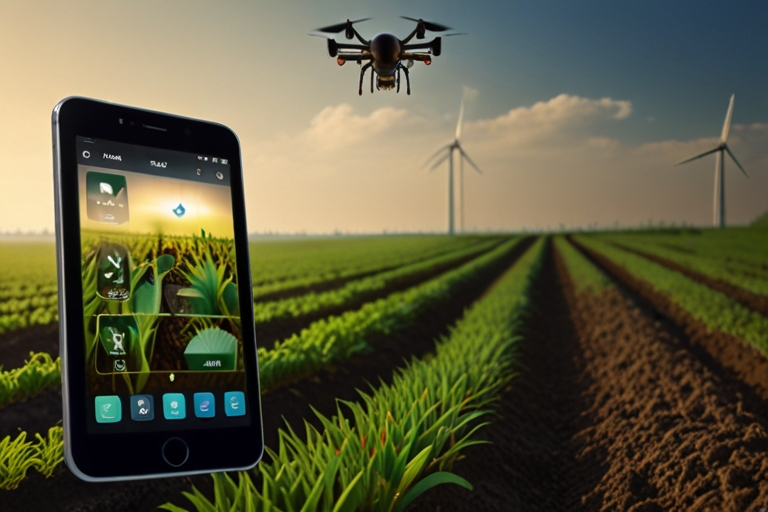
The future for Edge AI in smart farming applications continues to have great potential for helping farms control and streamline their operations without relying on cloud connections and the internet. Improvements in the fields of low-power AI chips, IoT sensor technology, and robots will enable the precision monitoring of the crops of the farms.
Resource management and yield predictions will be performed with precision and for the first time. Productivity will increase and the availability of smart farming applications will be improved in remote regions of the world.
Edge AI will promote the practice of sustainable farming, reduced waste, depletion of water, and fertilizers. Climate-resilient farming will help eliminate unwanted farming practices and promote modern farming in remote regions. The future in AI for smart farming is unlimited.
Conclusion
By enabling automation and real-time decision-making on the farm without requiring internet connectivity, edge AI is transforming smart agriculture. It assists farmers in efficiently increasing yields, monitoring crop health, controlling pests, and optimizing irrigation by processing data locally from sensors, drones, and equipment.
Edge AI offers substantial advantages, such as decreased latency, less resource waste, increased productivity, and improved data security, despite obstacles including high upfront expenditures and hardware constraints. As technology develops, Edge AI will be essential to improving agriculture’s sustainability, resilience, and accessibility—even in isolated locations with poor connection.
FAQ
What is Edge AI in agriculture?
Edge AI refers to artificial intelligence algorithms running directly on local devices like sensors, drones, and robots, enabling real-time data processing on the farm without relying on the internet.
How does Edge AI work without internet connectivity?
Edge AI processes data locally on the farm using edge devices. Decisions such as irrigation control, pest detection, or crop monitoring are made instantly without sending data to the cloud.
What are the benefits of using Edge AI for farmers?
Benefits include real-time decision-making, reduced operational costs, higher crop yields, data privacy, offline functionality, and support for autonomous machinery.
What challenges do farmers face with Edge AI?
Challenges include high initial investment, limited device capacity, maintenance needs, integration complexity, and technical knowledge required to operate the systems.

